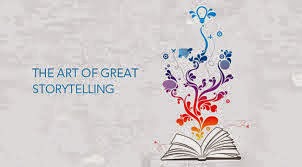Assisting Young Writers In The Craft of Storytelling
Before young writers can begin to develop a more
distinctive storyteller’s voice, we must
assist them to understand that writing becomes more personal when the topic or
focus of their writing is limited to a specific moment in time. The closer they
can get to a small moment, the more the writing comes to life for the reader. Then, if they can link more
than one of these special moments along a timeline, a sense of storytelling
emerges for the reader.
If your
students are writing focused and clear narratives but you are not gaining a
sense of the storyteller’s voice in the words, this is where the teaching focus
needs to be.
The challenge is to raise the young writers sense
of story. It is important for the developing writer to understand the role of the
narrator. Are they aware of the narrator’s viewpoint in telling the story? This is the story within the story. What mood
is created by the words? How is the plot
unfolding? What is the author doing to draw in the reader? How is the author
using the power of words to evoke a response from the reader?
When students are able to envision the telling of
their stories in this way, they can begin to write in a way that draws the
reader closer. When we approach the teaching of writing this way it assists the
developing writer to develop a sense of dramatic tension.
There are many craft strategies to introduce to
young writers to develop their storytelling skills. Show, don’t tell assists
the reader to visualize events in a story. The inside/outside strategy allows
the readers to gain a sense of a character’s internal thought processes. This
takes the writing beyond descriptions of the physical world and external
actions.
Developing a stronger sense of setting and
characters are both vital to the storytelling craft. Dialogue can be used to reveal characters and move the
story forward. It is also important to teach young writers about the role of
paragraphing to highlight specific details.
I often discuss with young writers the need to
tease and tantalize the reader. ‘Don’t
tell them everything at once,’ I remind them. ‘Don’t blurt out everything too quickly. It’s not a race, you are
telling a story and the writer controls time and events. What power you have at
your fingertips. You decide how much information is given and how quickly it is
revealed.’
We often
investigate how our favourite authors
teach us about pacing our stories at different speeds. They vary the pace. They expand moments. They
move through time quickly on occasions.
Storytelling is a craft. The best writing makes you
think. The writing causes you to question and wonder. Young writers need to be
made aware, -writers often tell their stories many times before their words
splash across the page.
As teachers we need to tell our students the whole
story about the craft of storytelling.







Comments
Post a Comment